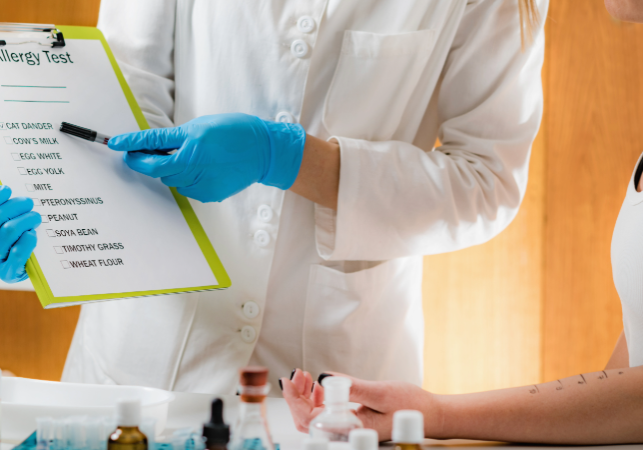
How Are Allergies Diagnosed?
You may suspect you’re allergic to something - you had a reaction after eating at a restaurant, or every autumn you get the same sneezing and sniffling. How do you determine what you’re actually allergic to? Allergy providers at Allergy Associates of La Crosse (AAOL) use a lot of different tools to determine what you’re allergic to, and at what specific level.
Determining the best testing method
Before you even get to your appointment, you’ll be asked to fill out a questionnaire that gives your provider an in-depth look into your potential allergies. It goes over simple things like: what are your symptoms? When do you experience them? How long do they last?
Then, the questionnaire goes into a lot of detail about your living conditions, what you’re exposed to on a daily basis, where you work, what your diet is like, and more. It also takes into consideration a range of allergic conditions that you may also experience, like asthma, eczema, and sinusitis.
Once you get to your appointment, your provider will go through this with you, hear about your history, and perform an exam. They put the puzzle pieces together to recommend the best testing for you.
Skin testing
For patients with environmental allergies, skin testing is often recommended. Your provider will choose specific allergens to test based on your exam and conversation.
Providers place a small amount of antigen under the top layer of skin on the upper arm using a small needle. It’s a small prick that feels like a little mosquito bite. You will sit in the waiting area for about 30 minutes as some of the “wheels” on your arm grow.
Your provider will then measure the size of the wheel, which will show your specific level of sensitivity to each allergen.

Blood testing
Your provider may recommend blood testing instead of skin testing, or alongside it. Food allergies can’t be diagnosed with skin testing, so a blood test would be required. For patients who experience severe or life-threatening reactions to environmental allergies, a blood test would be the safer option.
A small vial of blood is taken for this test. Lab technicians mix the blood sample with an extract of a potential allergen, such as dust mites. If a person is allergic, the two will bind together. Then, the technician adds an enzyme that can trigger a color change in the reaction. If the color changes, the lab can measure the amount of IgE present to assess your specific level of sensitivity.

Creating a treatment plan
After receiving your results, your provider can create a personalized treatment plan, which often includes allergy drops following The La Crosse Method™ Protocol. They create custom allergy drops that contain tiny amounts of the problem allergens identified with your testing. The amount is low enough to help build tolerance, but not too high to cause unnecessary reactions.
Over time, the amount of allergens in the allergy drops are slowly increased, so that the body learns to tolerate more and more of it. The hope is that by the end of successful treatment, reactions are reduced or eliminated.
Ready for testing and treatment? Contact AAOL to schedule your consult.
Posted in Allergic Conditions, Uncategorized and tagged Allergy Testing, Allergy Treatment.
